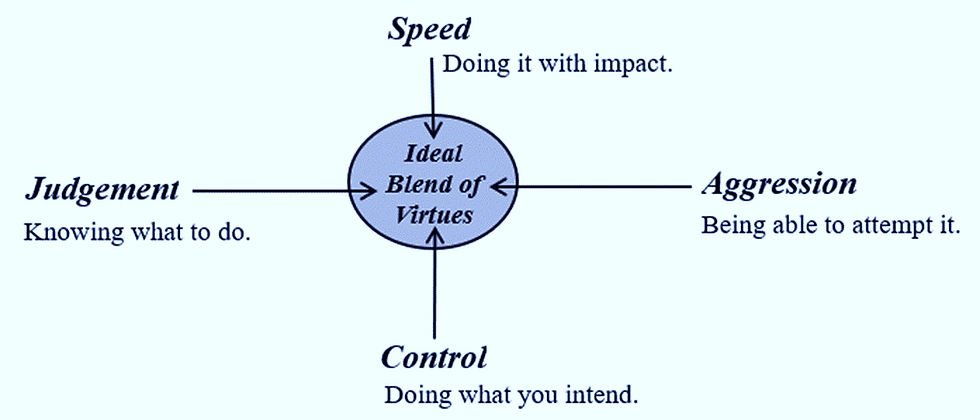The Four Martial Virtues & The Sorting Ceremony
- TSC

- Jul 8, 2024
- 3 min read
One of the more interesting approaches to articulating the ideas and mindset of swordfighting to come out of the Medieval period was written by Fiore dei Liberi in around 1410. He named four virtues that someone aspiring to be a sword master would need to possess: Prudence, Boldness, Speed, and Strength. Each was associated with an animal and a part of the body that epitomized the virtue. Boldness was symbolized by the lion and the left arm (near to the heart, the allegorical source of bravery), while the sensing/thinking characteristics of the head meshed well with Medieval associations of the lynx with Prudence. This is great stuff and - as far as I'm aware - an idea unique among historical fight manuals.
However, as I worked within this system I found that Fiore missed an opportunity to get to an even deeper level of understanding of the virtues which he so wisely laid out.
So what did he miss? Before I answer that, let me re-state Fiore's virtues in a slightly different way, a way that better aligns with how I see students act in class and sparring.
Instead of Prudence, let's use the term Judgement, which includes thinking, tactics, cleverness, discernment of time & distance, observation, and patience.
Boldness is restated as Aggression, which is the ability to take offensive action and force the opponent to react to you, instead of you reacting to him. In other words, Initiative.
Speed is good as-is. It is the ability to move yourself and your weapon quickly but can be generalized to include physical strength, the commonality being the use of physical ability to win.
Since Strength is now part of Speed, it must be replaced with something else. Reading Fiore's intent for the virtue that he called Strength, the idea of not losing footing is included. This is a factor of good footwork and balance, but we can generalize this as Control, and further generalize to include the whole of one's body as well as one's weapons. We think of Control as comprising stability, balance, footwork, weapon handling, precision of attacks, and effectiveness of guards.
Observing both students and experienced practitioners in action has shown that these are not four independent virtues, but rather two pairs of virtues.
1) Speed / Control
2) Judgement / Aggression
These pairs are in opposition to each other. To get more Speed, one must sacrifice Control (and vice versa); and to become more Aggressive you must give up Judgement (and vice versa).
While Fiore did say that one must have each of these Virtues, he didn't seem to think of there being a trade off between them. That is the opportunity for a more sophisticated understanding of how these Virtues work which I think he missed. But we owe him a significant debt for the original idea. I'm not sure I'd have come up with that on my own, at least not to the point of being able to settle on only four Virtues that encompass everything.
So, in the modernized system which we use at The Sword Conservatory, we can envision these Martial Virtues graphically like this, with the center representing the ultimate mastery of each Martial Virtue.
And we can create a narrative of the role that each Martial Virtue plays like this:
With Judgement I know what to do.
Aggression allows me to attempt it.
With Control I do what I intend and with Speed I execute impactfully.
The goal is to be as proficient as possible in all of them. With training and experience we may improve our mastery of each Martial Virtue, but no matter how well developed one is, it will always be the case that one Virtue can be enhanced at the expense of its opposite. The key to progress is increasing mastery without sacrificing the opposing Martial Virtue.
Each of us has a Martial Virtue that we rely upon in order to achieve victory. This is especially the case for untrained and newer fighters. To determine what that preferred Martial Virtue is for each student, we hold the Sorting Ceremony.
The approach is simple. Everyone gets to do a sparring match while observed by the entire class. Each observer is on the lookout for how each of the fighters relies on the four Martial Virtues. We typically do a couple of rounds where we stop when a point is scored, and then another round which is stopped after a time limit has been reached (at least 20 seconds). At the end of the match, the class votes on each fighter's primary Martial Virtue. It's a fun and instructive exercise which can teach us each a lot about ourselves.
In a future post, we'll discuss how we can use an understanding of our weaker Martial Virtues to drive training to become an overall better fighter.






Comments